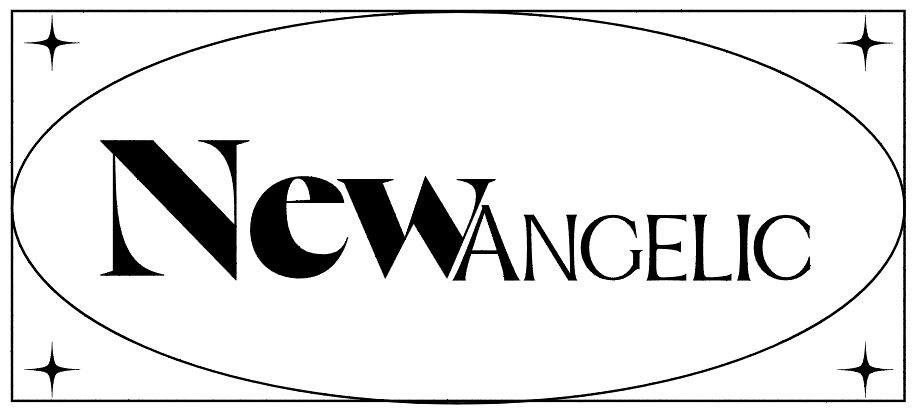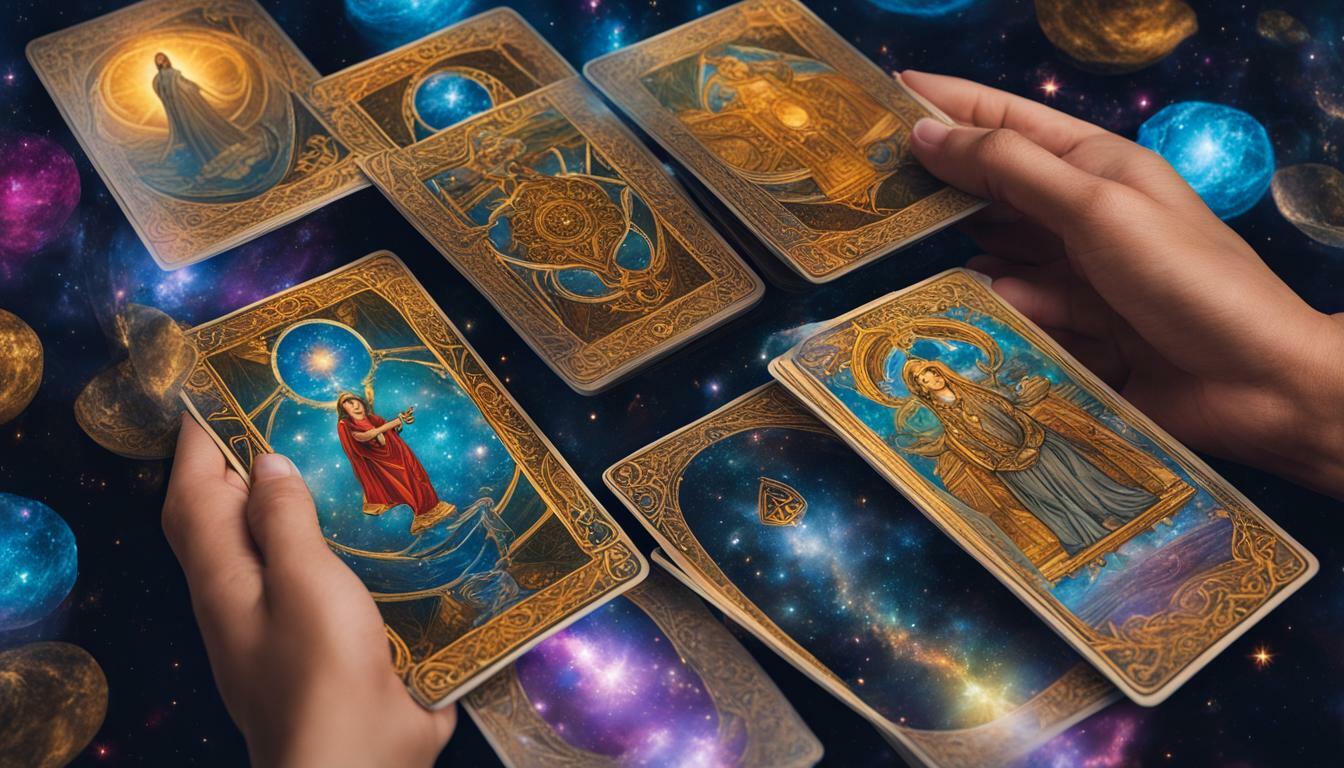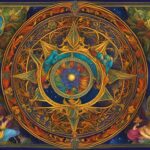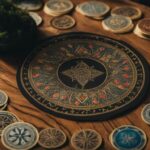Tarot card interpretation is a fascinating practice that involves understanding the meanings and symbolism behind each card in order to gain insights and guidance. These powerful cards can serve as a tool for self-discovery and reflection, providing valuable insights into various aspects of life and the human experience.
Key Takeaways:
- Interpreting tarot cards requires understanding the meanings and symbolism behind each card.
- A standard tarot deck consists of 78 cards, divided into the Major Arcana and the Minor Arcana.
- The Major Arcana cards represent major events and themes, while the Minor Arcana cards represent everyday aspects of life.
- Choose a tarot deck that resonates with you and feels right.
- Popular tarot spreads include the three-card spread, Celtic cross spread, and five-card spread.
Exploring Tarot Card Symbolism
Tarot cards are rich in symbolism, with each symbol carrying a specific meaning that adds depth and nuance to the card’s interpretation. Understanding these symbols is key to unlocking the wisdom and guidance that tarot cards offer. From the mystical imagery of the Major Arcana to the elemental symbols in the Minor Arcana, every symbol on a tarot card has a story to tell.
The Major Arcana cards, also known as the trump cards, are the heart and soul of the tarot deck. These cards depict powerful archetypes and universal themes, each with its own symbolic imagery. For example, The Fool represents new beginnings and taking a leap of faith, while The High Priestess symbolizes intuition and hidden knowledge. By studying the symbolism in these cards, you can delve into the depths of your subconscious and gain profound insights.
In the Minor Arcana, the symbols are more straightforward, reflecting everyday experiences and emotions. Each suit – Cups, Pentacles, Swords, and Wands – is associated with a specific element and represents different aspects of life. For instance, the Cups suit represents emotions, relationships, and intuition, while the Pentacles suit signifies material wealth, stability, and abundance. By understanding the symbolism within these suits, you can gain clarity and guidance in various areas of your life.
When interpreting tarot cards, pay attention to not only the individual symbols but also how they interact with each other. The placement and combination of symbols can provide additional layers of meaning and insight. Consider the imagery, colors, and overall composition of the card as they all contribute to its interpretation. As you explore the symbolism of tarot cards, you’ll develop a deeper connection with the cards and unlock the profound wisdom they hold.
| Tarot Card Symbol | Meaning |
|---|---|
| The Fool | New beginnings, spontaneity, taking chances |
| The High Priestess | Intuition, wisdom, hidden knowledge |
| The Magician | Manifestation, power, creativity |
| The Empress | Fertility, abundance, nurturing |
| The Emperor | Authority, structure, leadership |
| The Hierophant | Tradition, spirituality, guidance |
Key Symbols in Tarot Card Interpretation
- The Fool – Represents new beginnings and taking a leap of faith.
- The High Priestess – Symbolizes intuition and hidden knowledge.
- The Magician – Signifies manifestation, power, and creativity.
- The Empress – Represents fertility, abundance, and nurturing.
- The Emperor – Symbolizes authority, structure, and leadership.
- The Hierophant – Reflects tradition, spirituality, and guidance.
“The symbols in tarot cards are like a language spoken by your intuition. By learning to interpret these symbols, you can tap into the wisdom and guidance of the tarot.” – John Smith
| Suit | Element | Meaning |
|---|---|---|
| Cups | Water | Emotions, relationships, intuition |
| Pentacles | Earth | Material wealth, stability, abundance |
| Swords | Air | Intellect, thoughts, communication |
| Wands | Fire | Passion, creativity, ambition |
Getting to Know the Tarot Deck
Before diving into tarot card interpretation, it’s essential to familiarize yourself with the different components of a tarot deck and develop a connection with your cards. A standard tarot deck consists of 78 cards, each with its own unique symbolism and meaning. The deck is divided into the Major Arcana, which consists of 22 cards representing major life events and themes, and the Minor Arcana, which consists of 56 cards representing everyday aspects of human experience.
When choosing a tarot deck, it’s important to find one that resonates with you and speaks to your intuition. There are many different decks available, each with its own style and symbolism. Some popular decks include the Rider-Waite Smith, Crowley-Harris Thoth, Golden Dawn, Wild Unknown, Shadowscapes, Gendron Tarot, Black and White Tarot, and Tarot of Dreams. Take the time to explore different decks and choose one that sparks excitement and curiosity.
Once you have your tarot deck, it’s important to establish a connection with the cards. You can do this by spending time with the deck, shuffling the cards, and feeling their energy. Some people like to sleep with their deck under their pillow or meditate with the cards to deepen their connection. Trust your intuition and let the cards guide you as you embark on your tarot journey.
Exploring the Components of a Tarot Deck
To further familiarize yourself with the tarot deck, here is a breakdown of its components:
| Component | Description |
|---|---|
| Major Arcana | Comprised of 22 cards, these represent major life events and archetypal themes. |
| Minor Arcana | Consisting of four suits (Wands, Cups, Swords, and Pentacles), these 56 cards represent everyday experiences and situations. |
| Court Cards | Within the Minor Arcana, these cards depict characters that embody different personality traits and represent people in our lives. |
| Numbers | The numbered cards within the Minor Arcana represent different levels of energy and progression in a specific suit. |
| Major Arcana | These 22 cards carry great importance, representing significant life events, lessons, and transitions. |
By familiarizing yourself with the different components of a tarot deck and establishing a personal connection with your cards, you’ll be well-prepared to begin interpreting tarot cards and unlocking the insightful messages they have to offer.
Exploring Tarot Spreads
Tarot spreads are layouts that determine the positions of the cards in a reading, offering a framework to interpret the messages and insights they provide. These spreads allow for a deeper exploration of different aspects of life and provide guidance on specific questions or situations.
One popular tarot spread is the three-card spread, which gives a snapshot of the past, present, and future. It provides a concise overview of the energies surrounding a situation and helps to identify patterns or trends. The Celtic cross spread is another commonly used spread that provides a more in-depth analysis. It consists of ten cards that represent various aspects of the querent’s life, including their current circumstances, hopes, fears, and potential outcomes.
For a comprehensive reading, the five-card spread is often used. This spread offers insights into the core elements of a situation, including the factors influencing it, possible challenges, and potential resolutions. Each position in the spread has a specific meaning, allowing the reader to interpret the cards in relation to their placement and the overall context of the reading.
| Spread | Card Positions | Meaning |
|---|---|---|
| Three-Card Spread | Past, Present, Future | Provides an overview of the energies surrounding a situation and identifies patterns or trends. |
| Celtic Cross Spread | 10 positions indicating various aspects of the querent’s life | Offers a more in-depth analysis of the current circumstances, hopes, fears, and potential outcomes. |
| Five-Card Spread | Core elements of a situation, influencing factors, challenges, and potential resolutions. | Provides comprehensive insights into the different aspects of the situation and guidance for potential outcomes. |
When interpreting tarot spreads, it is important to consider the relationships between the cards, their positions, and the overall story they tell. Each card adds depth and nuance to the reading, contributing to a holistic understanding of the situation at hand.
Remember, while tarot spreads provide a structure for interpretation, they are not the be-all and end-all. Your intuition and connection with the cards are equally important. Trust your instincts and allow the messages from the cards to guide your interpretation, gaining valuable insights and guidance from the tarot.
Choosing the Right Tarot Deck
The journey of tarot card interpretation begins with choosing a deck that resonates with you and sparks your curiosity. With so many options available, finding the deck that speaks to your intuition can feel overwhelming. Each tarot deck has its own unique style, symbolism, and energy, so it’s important to explore different options and trust your instincts.
Popular tarot decks include the classic Rider-Waite Smith deck, known for its traditional imagery and widely recognized symbolism. This deck is a great starting point for beginners and offers a solid foundation for learning tarot. Another popular choice is the Crowley-Harris Thoth deck, which delves deeper into esoteric symbolism and is favored by those who are drawn to mysticism and spirituality.
If you prefer a more modern and unconventional approach, the Wild Unknown deck offers a fresh perspective with its minimalist and nature-inspired illustrations. The Shadowscapes deck combines fantasy and myth with vibrant artwork, providing a captivating exploration of the tarot’s archetypes. Whatever deck you choose, trust your intuition and select one that resonates with you on a personal level.
Key Considerations
- Visual Appeal: Look for a deck that captivates you visually and evokes a sense of inspiration. The artwork should speak to your personal taste and create a connection with your subconscious.
- Intuitive Connection: Pay attention to how you feel when looking at the cards. Do they resonate with you? Do they ignite your curiosity? Choose a deck that sparks a deep, intuitive connection.
- Meaningful Symbolism: Consider the symbolism used in the deck. Do you resonate with the imagery and the messages it conveys? Choose a deck that aligns with your personal beliefs, interests, and intentions.
- Guidebook or Companion App: Some decks come with a guidebook or companion app that provides detailed interpretations and guidance. This can be particularly helpful for beginners who are still learning the meanings of the cards.
Remember, there is no right or wrong choice when it comes to selecting a tarot deck. The most important factor is finding a deck that speaks to you and ignites your passion for tarot card interpretation. Trust your intuition and allow yourself to explore the vast world of tarot decks until you find the one that resonates with your unique journey.
| Tarot Deck | Style | Symbolism |
|---|---|---|
| Rider-Waite Smith | Traditional | Widely recognized |
| Crowley-Harris Thoth | Esoteric | Mysticism and spirituality |
| Wild Unknown | Modern, minimalist | Nature-inspired |
| Shadowscapes | Fantasy and myth | Vibrant artwork |
Nurturing Your Intuition and Reflecting on Readings
While learning the meanings and symbolism of tarot cards is crucial, it is equally important to nurture your intuition and reflect on the readings to unlock deeper understanding. Tarot cards serve as a tool to tap into your own inner wisdom and connect with your intuition. Trusting your intuition allows you to go beyond the traditional interpretations and find unique insights that resonate with you.
One way to nurture your intuition is through regular practice. As you become more familiar with the tarot cards and their meanings, take time to engage in daily or weekly readings for yourself. This consistent practice helps to enhance your intuitive abilities and deepen your connection with the cards. Each reading becomes an opportunity for self-reflection and personal growth.
When interpreting the cards, pay attention to the feelings and sensations that arise within you. Your intuition often communicates through subtle cues and gut instincts. Trust these intuitive nudges and allow them to guide your interpretation. Remember that tarot readings are not just about predicting the future, but also gaining a deeper understanding of yourself and the situations you are facing.
| Ways to nurture your intuition: |
|---|
| 1. Meditate regularly to quiet the mind and enhance your intuitive abilities. |
| 2. Keep a tarot journal to record your readings, reflections, and insights. |
| 3. Practice intuitive exercises, such as pulling a card daily and reflecting on its message. |
| 4. Seek guidance from experienced tarot readers or join tarot study groups to learn from others. |
After each reading, take a moment to reflect on the messages and themes that emerged. Consider how they relate to your current situation and what actions or shifts in perspective they may suggest. Journaling about your readings can be a powerful tool for self-reflection and personal growth. It allows you to delve deeper into the cards’ messages and gain valuable insights over time.
Quote:
“Intuition is the key that unlocks the door to the hidden treasures within the tarot cards.” – Unknown
Summary:
- Nurturing your intuition is essential in interpreting tarot cards.
- Regular practice and self-reflection deepen your connection with the cards.
- Trust your intuition and pay attention to gut instincts during readings.
- Meditation, journaling, and seeking guidance from others can enhance your intuitive abilities.
- Reflect on the messages and themes that emerge from each reading to gain valuable insights.
| Popular tarot decks: |
|---|
| Rider-Waite Smith |
| Crowley-Harris Thoth |
| Golden Dawn |
| Wild Unknown |
| Shadowscapes |
| Gendron Tarot |
| Black and White Tarot |
| Tarot of Dreams |
Are the Meanings of Tarot Cards Universal?
Tarot card interpretation explained: While the symbolism may vary across cultures, tarot cards often possess universal meanings. The archetypal images found in the tarot transcend linguistic and cultural boundaries, making them relatable to people worldwide. However, the interpretation can also be influenced by personal beliefs and experiences, leading to individual variations in understanding.
Conclusion
Tarot card interpretation is a powerful tool for self-discovery and reflection, accessible to anyone willing to dedicate time, practice, and patience. By understanding the meanings and symbolism of each card in a tarot deck, you can unlock valuable insights and guidance for your life’s journey.
A standard tarot deck consists of 78 cards, divided into the Major Arcana and the Minor Arcana. The Major Arcana represents significant events and themes, while the Minor Arcana represents everyday aspects of human experience. Each card carries its own unique meaning and symbolism, offering a rich tapestry of wisdom to explore.
To read tarot cards, begin by shuffling the deck and setting your intention. Then, lay out the cards in a spread, such as the three-card spread, Celtic cross spread, or five-card spread. Interpret the cards based on their meanings and positions in the spread, trusting your intuition and reflecting on the reading to gain deeper insights.
Choosing the right tarot deck is essential, as it should resonate with you and spark excitement. Popular decks include the Rider-Waite Smith, Crowley-Harris Thoth, Golden Dawn, Wild Unknown, Shadowscapes, Gendron Tarot, Black and White Tarot, and Tarot of Dreams. Find a deck that speaks to your intuition and allows you to connect with the cards on a personal level.
Remember, tarot cards are not evil or fortune-telling tools, but rather vehicles for self-exploration and awareness. Embrace tarot card interpretation with passion, logic, curiosity, and intuition, and let the cards guide you on your journey of self-discovery.








